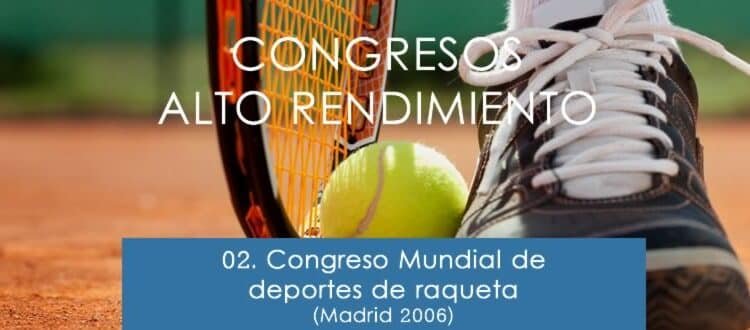Injury prevention among young table tennis and tennis players.
Resumen injury prevention among young table tennisand tennis
Tennis and table tennis are two of the world’s most popular sports games. A common link between tennis and table tennis is that each entails intermittent exercise with vigorous involvement of both lower and upper body musculature during bouts of activity. Engagement of upper limb muscle groups is largely unilateral. Tennis and table tennis call for fast reactions, quick acceleration, fast arm, fast footwork and whole-body movements. Presently, the important role of prevention of sports injuries is very well argued in the sports medicine literature. Despite of those advances in injury prevention, sports injuries continue to affect a significant number of table tennis and tennis players. As sports participation increases, so does the incidence of both acute and overuse sports-related injuries. The incidence further rises as the sport becomes increasingly more violent and aggressive for the muscles. The poor recognition, localization and reporting of pain by young table tennis and tennis players can often delay access to appropriate and timely intervention to prevent injury chronicity. The first requirement for effective management of table tennis and tennis injuries is therefore prevention, based on an understanding of the factors involved in overuse injuries generally, and table tennis and tennis injuries specifically. If we will avoid injuries, we have to think about them at the start of the player’s career and not when injury is there. The human body has a tremendous capacity to adapt to physical stresses, but nevertheless training errors are the most common cause of overuse injuries among youngsters.
Participation in tennis or table tennis, whether it’s recreational or as training, can teach kids to stretch their limits and learn sportsmanship and discipline. But either way the child participates tennis or table tennis also carries the potential for injury. By knowing the causes of sports injuries and how to prevent them, trainer can help make players a positive experience. Nearly all health authorities, physicians, and physical therapists are in agreement that exercise is vital to our body’s well being. Yet, all must be alert to possible injuries when we exceed our personal levels of participation. As a rule of thumb, the younger the child, the less severe the injury. However, it is also true that the more rapidly children grow, the more susceptible they are to injury at bone growth sites (Knee, Heel, Shoulder, Elbow, Hip, and Back). Trainer and young player should know the difference between soreness and chronic pain. Soreness is temporary, but chronic pain continues over a greater length of time. It is not always necessary to see a doctor right away if your shoulder is sore, but player should schedule an appointment if the pain is worsening at any time or if it persists for a week or more. The most important thing to do when the player suspects he is injured is to stop practicing right away and go see a doctor who is specialized in sports medicine.
Many “table tennis and tennis sports” injuries are due to overuse. Typically, these injuries are not associated with a dramatic fall, tumble or twist, but occur after a lot of exertion, during practice or after competition. The cause of the injury is repetitive, small, even microscopic, damage to the muscles, tendons, ligaments and bones of the arms or legs. Some children and adolescents enjoy weight lifting workouts to get in shape, stay in shape, and/or add strength. Although there has been a theoretical concern about this activity for children, because of their growing bones, research has shown that children in a supervised weight lifting class are at no increased risk of injury from weight lifting. If they enjoy the activity, there appears to be no adverse effect from their participation. The high repetition of activity necessary to develop and perfect table tennis skills produces the potential for chronic overuse injury.
The epiphyses and apophyses of the growing skeleton are specifically at risk. Poor technique of the player, coupled with the anomalies of growth and improper equipment, produce skill errors, which may result in an increased stress on the muscoloskeletal tissues and produces pain in response to micro trauma or overload. Shoulder joint is very important body segment in tennis and table tennis. At the same time, it is very prone to injuries because of its complex structure and function. In our opinion it is important to understand anatomy, biomechanics, motor behaviour, and neuromuscular control in order to shape an appropriate kinesiotherapeutic injury prevention programme. Respecting the principle of progression, professionals should consider all the components (strength, power, flexibility, proprioception) important to achieve final functional joint stability. Such an athletic injury should therefore be approached widely with the emphasis on proximal stability in order to gain efficient distal mobility. Common injuries in racquet sports are rotator cuff tendinitis (»dead arm«), »King-Kong« arm (over-development of dominant arm), tennis elbow, forearm nerve entrapments, low back pain, abdominal wall sprain, tennis leg and eye injuries (Sherry, & Bokor, 1997). To help prevent reinjury, each player had to warm up adequately before practice and games. The most important is to take it slow when after rehabilitation player gets back into his sport and gradually build back up to his preinjury level.
On the other hand player and trainer should know players limits. If the previously injured part begins to hurt, player has to stop immediately and rest. He may not delay in seeking medical attention if the pain persists. It’s player’s body way of telling him something is not right. Staying injury-free throughout the sports season requires a proper conditioning and exercise program. So, play, but play safe. Try to learn from your experience and do the things that can help you avoid getting hurt.
Bibliografía
- 1. Kondri?, M., Furjan-Mandi?, G., Mišigoj-Durakovi?, M., & Karpljuk, D. (2001). Table tennis as a leisure and rehabilitation sporting activity. In: Bartoluci, Mato (Ed.), Heimer, Stjepan (Ed.), Ruži?, Lana (Ed.). Sport for all-health-turism : [proceedings of the 2nd CESS Conference]. Zagreb: CESS – European Confederation Sport and Health: Faculty of Physical Education University of Zagreb: Croatian Association “:Sport for All”, pp. 216-219.
- 2. Kondri?, M., Furjan-Mandi?, G., & Medved, V. (2003). Myoelectric and neuromuscular measures of forehand strike in table tennis executed with balls of two different sizes. In: 8th International Table Tennis Federation Sports Science Congress and 3rd World Congress of Science and Racket Sports, 17 th -19 th March 2003, INSEP, Paris, Francija – Programme and abstracts. Programme and abstracts : les entretiens de l’INSEP.
- 3. Kondri?, M., & Furjan-Mandi?, G. (2003). Zakonitosti kondicijskih programov v treningu namiznoteniškega igralca. [Rules for designing physical preparation in table tennis]. Top spin (Ljubl.), 2(5):3-6.
- 4. Krivickas, L.S. (1997). Anatomical factors associated with overuse sports injuries. Sports Medicine. 24(2):132-146.
- 5. Scott, M.J. (1992). ITTF questionare of elite athletes at 41st World table tennis championships. International Journal of Table Tennis Sciences, No. 1, pp. 191-193.
- 6. Sherry, E., & Bokor, D. (1997). Sports Medicine. Problems and Practical Management. London: Greenwich medical media Ltd.
- 7. Weber, K. (1982). Analyse der körperlichen Beanspruchung in den verschiedenen Rückschlagspielen unter dem Aspekt der Präventiv- und Leistungsmedizin. In: Andersen/Hagedorn: Training im Sportspiel. 4. Int. Sportspielsymposium. Ahrensburg. Pp. 111-133.









